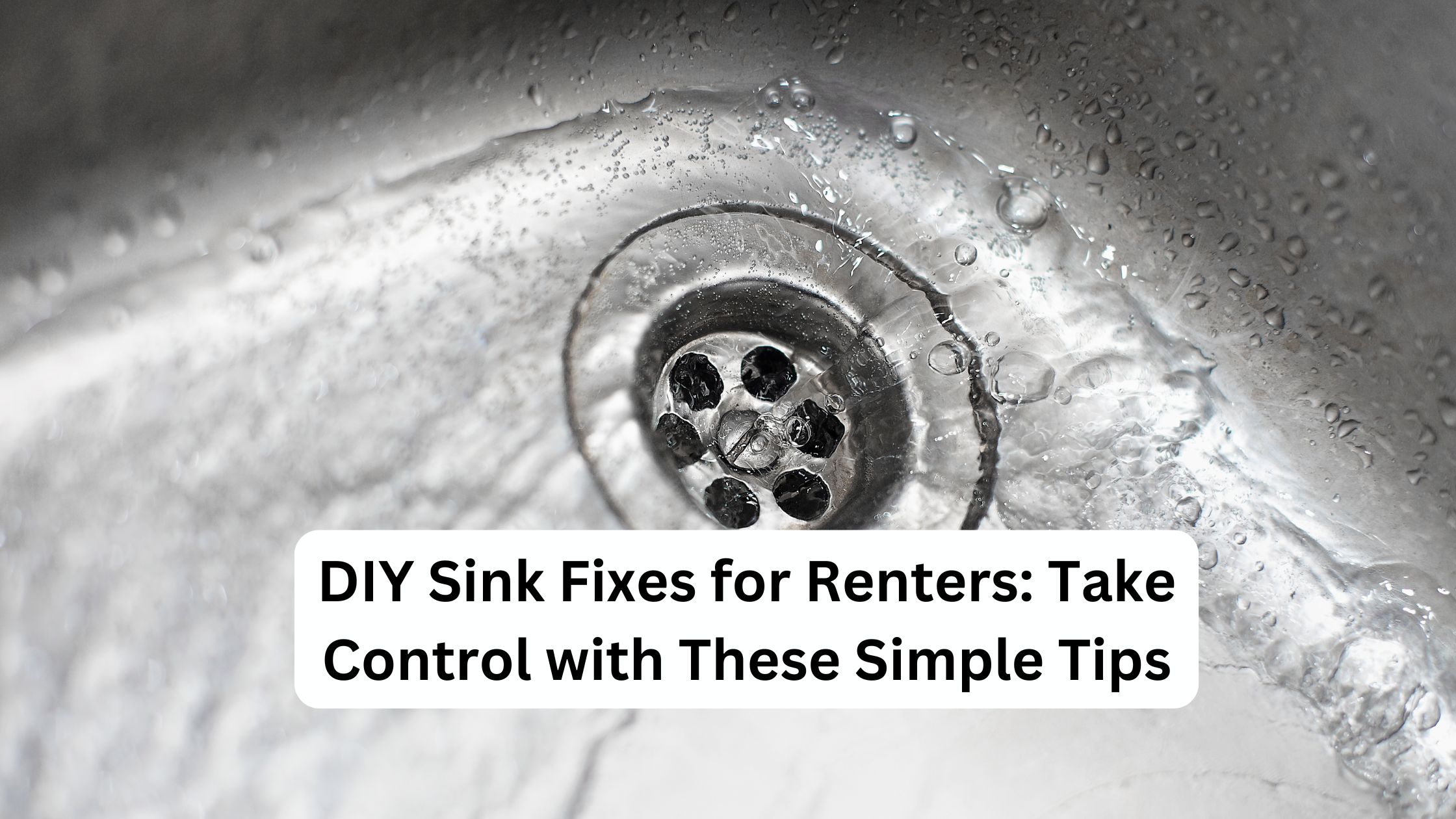DIY Sink Fixes for Renters: Take Control with These Simple Tips
Introduction
Clogged sinks are a common headache for renters. Whether it’s the bathroom or the kitchen, a blocked drain can disrupt your daily routine and create unnecessary stress. Unlike homeowners, renters often face limitations when it comes to making modifications, and calling the landlord for every clog isn’t always practical or immediate. That’s where tenant-friendly DIY solutions come to the rescue. In this guide, we’ll explore five simple methods to unclog a sink that won’t violate your lease agreement. We’ll also share tips on preventing clogs and knowing when it’s time to call in the professionals. Get ready to become a DIY plumbing hero!
The Culprit Behind the Clog
Before we jump into solutions, it’s essential to understand what typically causes sink clogs. Knowing what you’re up against can help you choose the right method to fix the problem. In rental properties, sink clogs are most commonly caused by the buildup of food particles, grease, soap residue, and hair. Over time, these substances accumulate in the pipes, leading to blockages that cause water to drain slowly or not at all. Sometimes, foreign objects like small kitchen utensils or jewelry can accidentally find their way into the drain, causing an obstruction. By identifying the source of the clog, you can approach the problem with the appropriate DIY method.
5 Simple DIY Methods to Unclog a Sink
Method 1 Using a Plunger
A plunger is a handy tool that can often clear minor clogs with ease. To use it effectively, first ensure that the sink has standing water, as this helps create a seal. Place the plunger cup over the drain and begin with gentle pushes to expel air. Then, plunge vigorously up and down to dislodge the clog. The suction created should help break up the blockage, allowing water to flow smoothly. If the sink has a double basin, be sure to plug the other drain to maintain pressure. This method is particularly effective for larger, loose clogs and doesn’t require any chemicals.
Method 2 Baking Soda and Vinegar
Baking soda and vinegar are natural cleaning agents that work wonders on stubborn clogs. Start by pouring a pot of boiling water down the drain to loosen any debris. Next, add a cup of baking soda, followed by a cup of vinegar. The mixture will fizz and bubble, breaking down blockages. Cover the drain with a plug and wait for about 15 minutes. Finish by flushing the drain again with boiling water. This eco-friendly method is perfect for dissolving organic matter and is safe for most types of pipes, making it ideal for renters seeking a chemical-free solution.
Method 3 Removing the Trap
The sink trap, also known as the P-trap, is the curved section of pipe beneath the sink. It’s designed to catch debris and prevent it from blocking the main plumbing system. To clean the trap, place a bucket underneath to catch water and unscrew the slip nuts holding the trap in place. Remove the trap and clean out any gunk or debris. Afterward, reinstall it and test the sink to ensure the flow is restored. This method is effective for clogs located close to the drain and doesn’t require any special tools, just a bit of elbow grease.
Method 4 Using a Drain Snake
A drain snake, or plumber’s auger, is a flexible tool designed to reach deep into pipes and clear stubborn blockages. To use, feed the snake into the drain until you feel resistance, then rotate the handle to break up the clog. Gently pull the snake back out, removing any debris it has caught. This method is effective for clogs that are further down the pipe and can handle tougher obstructions than a plunger. Drain snakes are affordable and available at most hardware stores, making them a valuable addition to any renter’s toolkit.
Method 5 Boiling Water
When dealing with minor clogs caused by grease or soap buildup, boiling water can be surprisingly effective. Simply boil a large pot of water and carefully pour it down the drain in stages, allowing it to work through the blockage. The heat will melt grease and soap residues, clearing the way for smooth drainage. For best results, repeat the process once or twice. This method is safe for metal pipes but should be used cautiously with PVC pipes, as the heat may cause them to warp.
Preventing Future Clogs
Preventing clogs is much easier than fixing them once they happen. By adopting a few simple habits, you can keep your sink drains running smoothly. Start by using a drain strainer to catch food scraps and hair before they reach the pipes, and make sure to clean the strainer regularly to avoid buildup. Never pour grease or coffee grounds down the drain, as they can harden and create blockages—dispose of them in the trash instead. After each use, run hot water down the drain to wash away any lingering debris. By following these straightforward tips, you can maintain clog-free drains and hassle-free living in your rental home.
Knowing When to Call for Professional Help
DIY methods can handle many clogs, but some situations call for professional assistance. If your efforts to clear the sink have failed or you suspect a more serious issue, such as a broken pipe, it’s time to call an expert. Recurring clogs, despite regular preventative measures, may signal underlying problems in the plumbing system that require professional attention. For renters, it’s important to notify your landlord about persistent plumbing issues, as they are often responsible for arranging necessary repairs. Recognizing when to seek help can save you time, effort, and prevent further damage in the long run.
In Conclusion
Dealing with clogged sinks in rental properties doesn’t have to be daunting. With the right DIY methods, you can tackle blockages efficiently and effectively. From plungers and baking soda to drain snakes and boiling water, these simple solutions empower renters to take charge of their home maintenance. Being proactive and adopting preventative habits can help keep your drains clear and your home running smoothly. Remember, prompt action is key to preventing more significant issues down the line.
References:

